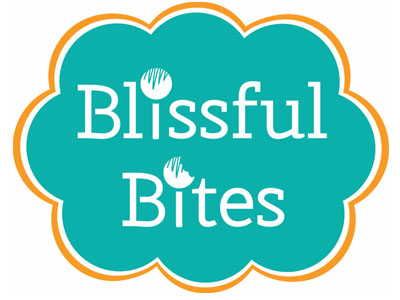Latest News From the Internal Revenue Service
April 20, 2020
The Internal Revenue Service today issued a special alert for several groups of federal benefit recipients to act by this Wednesday, April 22, if they didn’t file a tax return in 2018 or 2019 and have dependents so they can quickly receive the full amount of their Economic Impact Payment.
Their $1,200 payments will be issued soon and, in order to add the $500 per eligible child amount to these payments, the IRS needs the dependent information before the payments are issued. Otherwise, their payment at this time will be $1,200 and, by law, the additional $500 per eligible child amount would be paid in association with a return filing for tax year 2020.
Following extensive work by the IRS and other government agencies, $1,200 automatic payments will be starting soon for those receiving Social Security retirement, survivor or disability benefits (SSDI), Railroad Retirement benefits, Supplemental Security Income (SSI) and Veterans Affairs beneficiaries who didn’t file a tax return in the last two years. No action is needed by these groups; they will automatically receive their $1,200 payment.
For those benefit recipients with children who aren’t required to file a tax return, an extra step is needed to quickly add $500 per eligible child onto their automatic payment of $1,200.
For people in these groups who have a qualifying child and didn’t file a 2018 or 2019 tax return, they have a limited window to register to have $500 per eligible child added automatically to their soon-to-be-received $1,200 Economic Impact Payment. A quick trip to a
special non-filer tool on IRS.gov by noon Eastern time, Wednesday, April 22, for some of these groups may help put all of their eligible Economic Income Payment into a single payment.
“We want to ‘Plus $500’ these recipients with children so they can get their maximum Economic Impact Payment of $1,200 plus $500 for each eligible child as quickly as possible,” said IRS Commissioner Chuck Rettig. “They’ll get $1,200 automatically, but they need to act quickly and register at IRS.gov to get the extra $500 per child added to their payment. These groups don’t normally have a return filing obligation and may not realize they qualify for a larger payment. We’re asking people and organizations throughout the country to share this information widely and help the IRS with the Plus $500 Push.”
To help spread the word to recipients with children about this special “Plus $500 Push,” the IRS has additional material available on a
special partners page that can be shared with friends, family members and community groups. This effort will focus on the initial April 22 deadline and continue this spring to reach as many people as possible since the child payments will continue to be made in the weeks and months ahead.
Have a child but don’t file a tax return? Visit IRS.gov now
Those receiving federal benefits – including Social Security retirement, survivor or disability benefits (SSDI), Railroad Retirement benefits, Supplemental Security Income (SSI) or Veterans Administration benefits – who have with children and who weren’t required file a tax return in 2018 or 2019 should visit the
Non-Filer: Enter Payment Info Here tool on IRS.gov. By quickly taking steps to enter information on the IRS website about them and their qualifying children, they can receive the $500 per dependent child payment automatically in addition to their $1,200 individual payment. Otherwise, their payment at this time will be $1,200 and, by law, the additional $500 per eligible child amount would be paid in association with a return filing for tax year 2020.
First window affects SSA/RRB recipients with children; SSI and VA recipients have slightly more time to add $500 to automatic payments
For certain SSA / RRB beneficiaries who don’t normally file a tax return and do not register with the IRS by April 22, they will still be eligible to receive the separate payment of $500 per qualifying child. For those who miss the April 22 deadline, their payment at this time will be $1,200 and, by law, the additional $500 per eligible child amount would be paid in association with a return filing for tax year 2020. They will not be eligible to use the Non-Filer tool to add eligible children once their $1,200 payment has been issued.
SSI and VA beneficiaries have some additional time beyond April 22 to add their children since their $1,200 automatic payments will be made at a later date. SSI recipients will receive their automatic payments in early May, and the VA payment schedule for beneficiaries who receive Compensation and Pension (C&P) benefit payments is still being determined. If they have children and aren’t required to file a tax return, both groups are urged to use the
Non-Filer tool as soon as possible. Once their $1,200 payment has been issued, they will not be eligible to use the Non-Filer tool to add eligible children. Their payment will be $1,200 and, by law, the additional $500 per eligible child amount would be paid in association with a return filing for tax year 2020.
No action needed by most taxpayers
The Treasury Department will make these automatic payments to SSA, SSI, RRB and VA recipients. Recipients will generally receive the automatic $1,200 payments by direct deposit, Direct Express debit card or by paper check, just as they would normally receive their benefits.
For information about Social Security retirement, survivors and disability insurance beneficiaries, please visit the SSA website at
SSA.gov. For more information related to veterans and their beneficiaries who receive Compensation and Pension (C&P) benefit payments from VA, please visit
VA.gov.
April 15, 2020
CHECK THE STATUS OF YOUR ECONOMIC IMPACT PAYMENT
The Treasury Department and the Internal Revenue Service (IRS) have released a
new web tool that will allow taxpayers to update their direct deposit information to receive their stimulus checks (Economic Impact Payments) more quickly. This tool, which is now available, is available to those taxpayers who have filed 2018 and/or 2019 tax returns and is
separate from the tool used by non-filers . The new tool,
Get My Payment, which is available now, will:
-
- Provide you with the status of your payment, including the date your payment is scheduled to be deposited into your bank account or mailed; Advise you of your payment type; and Allow eligible taxpayers a chance to provide bank account information to receive payments more quickly rather than waiting for a paper check. This feature will be unavailable if the Economic Impact Payment has already been scheduled for delivery.
Entering bank or financial account information will allow the IRS to deposit your payment directly into your account. Otherwise, your payment will be mailed to you as a paper check.
Have your 2019 tax return (if filed) and your 2018 tax return handy.
You’ll be asked to enter a few bits of key information, including your Social Security Number, date of birth, and address:
The instructions do not specifically advise, but this information needs to match what the IRS has on file (with your last filed return).
Checks are already hitting bank accounts. For security reasons, the IRS plans to mail a letter about the economic impact payment to your last known address within 15 days after the payment is paid. The letter will provide information on how the payment was made and how to report any failure to receive the payment.
Eligible taxpayers who filed tax returns for 2019 or 2018 will receive the payments automatically. Automatic payments will also go out shortly to those receiving Social Security retirement or disability benefits and Railroad Retirement benefits.
Keep in mind that the payment is NOT taxable and will not affect your 2020 refund.






 Add to Calendar
Add to Calendar






